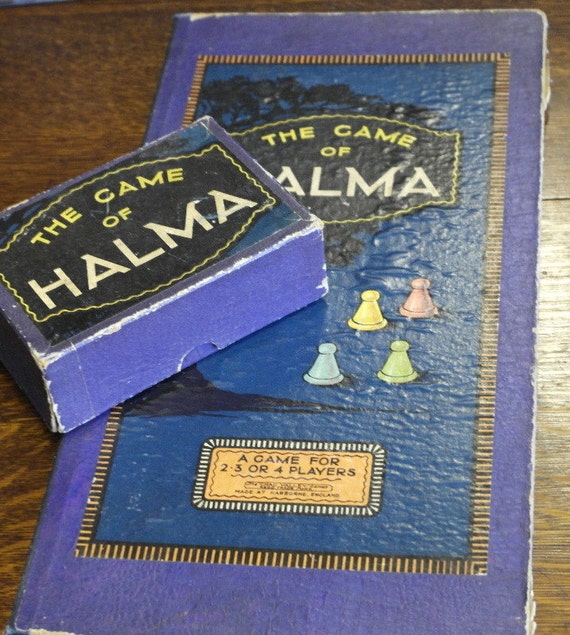

Since the player with light checkers has the advantage of the first move the dark player gets one extra turn after the light player moves all his checkers to the dark house.

One exception is made to this rule for balancing the game. George Howard Monks, a surgeon at Harvard Medical School, invented the game Halma. When a player makes a move that results in all his checkers being located in the opponent's house the player wins. A rare painted game board with a modernistic Paul Klee-like composition. An 18th century gaming board marked out like a halma. If the same checker can continue jumping over another checker it can do so (but doesn't have to). The game of halma, whose name means jump in Greek, is an entertaining product of the Victorian era. A checker can jump over another checker (either the player's or the opponent's) standing on an adjacent cell if there is an empty cell in the same direction right after it.The turn is passed to the opponent right after this kind of move. A checker can move to any adjacent unoccupied cell horizontally, vertically or diagonally.There are two variants of moving a checker: Players move alternately one checker per turn, starting with the player with the light checkers.

The goal of the Halma is to move all of your own checkers from your own house to the opponent's house.

The areas where the checkers are placed are called " houses". igGameCenter uses a 10x10 checkerboard.Įach player has 15 checkers ( dark and light) located in opposite corners of the board. The original Halma is played on a 16x16 checkerboard but other sizes can be used too. It is permitted to move a piece into any square on the board including squares in areas belonging to other players but, once a piece has reached the opposite area, it may not be moved out of the area but it may move within the area.Halma (meaning "jump" in Greek) is a two-player abstract board game invented in 1883 (or 1884) by George Howard Monks. It does occasionally happen that a player is able to move a piece all the way from the starting corner across the board and into the opposite corner in one turn! After each hop, the player may either finish or, if possible and desired, continue by hopping over another piece. A hop may be over any coloured piece including the player's own and can proceed in any one of the eight directions. Where a hopping move is made, each hop must be over an adjacent piece and into the vacant square directly beyond it. The piece may either be simply moved into an adjacent square OR it may make one or more hops over other pieces. Players take turns to move a single piece of their own colour. The PlayĪ toss of a coin decides who starts. In this case, the game is won when all the available points within the area are occupied. Should one or more of the squares in the target area contain a piece belonging to another player, this does not prevent a player from winning. The aim of the game is to be the first to player to move all pieces across the board and into opposing corner, within area delineated by the heavy line. When 2 players play, 19 pieces are positioned in the appropriate opposing corners in formation 1 - 2 - 3 - 4 - 5 - 4 when 4 players play, 13 pieces are positioned in each corner in formation 1 - 2 - 3 - 4 - 3. Pieces are usually flat disks like draughtsmen or upright like the classic pawn in chess. Two opposing corners additionally have another heavy line which delineates the 19 corner squares for the initial position of the pieces in the 2 player game. In each corner, a heavy line delineates 13 squares, which are the starting squares for pieces in the 4 player game. A Halma board consists of 16 x 16 small chequered squares.


 0 kommentar(er)
0 kommentar(er)
